
News • Spanish study
Does vitamin D deficiency lead to severe COVID-19 cases?
Over 80 percent of 200 COVID-19 patients in a hospital in Spain have vitamin D deficiency, according to a new study.

Over 80 percent of 200 COVID-19 patients in a hospital in Spain have vitamin D deficiency, according to a new study.

Launched in 2011, the Pan-Cancer Project, involved more than 1,300 scientists and clinicians in 37 countries, and analysed more than 2,600 genomes of 38 tumour types. Discovery: The first indications of cancer development can be found in genes at a very early stage, which triggers new opportunities for treatment.
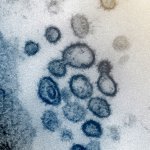
Asymptomatic coronavirus sufferers appear to lose detectable antibodies sooner than people who have exhibited COVID-19 symptoms, according to one of the biggest studies of its kind in Britain published on Tuesday.

Researchers at Newcastle University are involved in a study to understand the risks of COVID-19 transmission on public transport and to identify the best measures to control it. Known as Project TRACK (Transport Risk Assessment for Covid Knowledge), the study will conduct fieldwork on buses and trains in London, Leeds and Newcastle, including the Metro system in Tyne and Wear.

‘Mini-lungs’ grown from tissue donated to Cambridge hospitals has provided a team of scientists from South Korea and the UK with important insights into how COVID-19 damages the lungs. Writing in the journal Cell Stem Cell, the researchers detail the mechanisms underlying SARS-CoV-2 infection and the early innate immune response in the lungs.
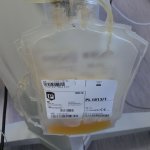
Convalescent plasma shows limited effectiveness as a potential treatment for patients with COVID-19 to help them fight off the infection, finds a clinical trial from India published by The BMJ. The findings show that convalescent plasma fails to reduce mortality or stop progression to severe COVID-19.

Scientists cannot be expected to drop everything they’re working on to turn their attention to beating COVID-19, according to the winner of the 2019 Nobel Prize in Physiology or Medicine, Professor Sir Peter Ratcliffe. Speaking before he delivered the prestigious Michel Clavel lecture to the 32nd EORTC-NCI-AACR Symposium on Molecular Targets and Cancer Therapeutics, which was due to take place…

Vaccines are being hailed as the solution to the COVID-19 pandemic, but the vaccine trials currently underway are not designed to tell us if they will save lives, reports Peter Doshi, Associate Editor at The BMJ. Several COVID-19 vaccine trials are now in their most advanced (phase 3) stage, but what will it mean exactly when a vaccine is declared “effective”? Many may assume that successful…
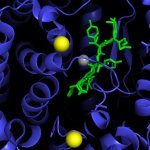
Researchers have found that a class of commonly-used heart drugs may also improve patients’ responses to anti-cancer immunotherapies called PD(L)1 inhibitors, according to preliminary findings to be presented at the 32th EORTC-NCI-AACR Symposium on Molecular Targets and Cancer Therapeutics.
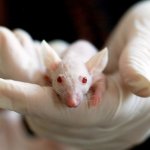
A team of researchers in the US and Australia have developed a way of testing potential drugs for children’s cancers so as to take account of the wide genetic diversity of these diseases. In new research to be presented at the 32th EORTC-NCI-AACR Symposium on Molecular Targets and Cancer Therapeutics, Professor Peter Houghton, director of the Greehey Children’s Cancer Research Institute (San…
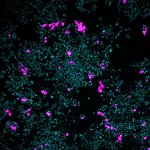
The coronavirus SARS-CoV-2 is known to infect cells via the receptor ACE2. An international research team under German-Finnish coordination has now identified neuropilin-1 as a factor that can facilitate SARS-CoV-2 entry into the cells’ interior. Neuropilin-1 is localized in the respiratory and olfactory epithelia, which could be a strategically important localization to contribute to…

Research led by Barts Cancer Institute (BCI), Queen Mary University of London, has revealed novel insights into the mechanisms employed by melanoma cells to form tumours at secondary sites around the body. The findings from the study may help to identify new targets to inhibit melanoma spread and guide treatment decisions in the clinic.
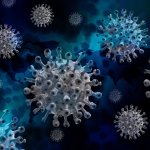
A new risk tool, developed by UK researchers to predict a person’s risk of being admitted to hospital and dying from COVID-19 has been published by The BMJ. With cases increasing in the UK and elsewhere, and winter approaching, there is an urgent need for reliable models that predict the likely course of COVID-19, to support decisions about shielding, hospital admission, treatment, and…
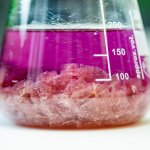
The fight against bacterial infections, especially those caused by resistant pathogens, is in full swing with the search for new antibiotic agents. The aim is to identify substances that attack the pathogens in a truly novel way. The team at the Center for Systems-Based Antibiotic Research (Cesar) at Ruhr-Universität Bochum (RUB) has described in two publications how assess if a new antibiotic…
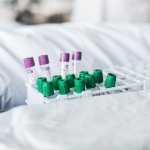
The present Coronavirus pandemic with all its effects on society – both health and economic – highlights the urgency of developing new therapies for COVID-19 treatment. At the same time, it demonstrates the necessity to become well prepared for new virus infections we may be facing in the future. To help control the current pandemic and brace for novel pathogens that may cause future…
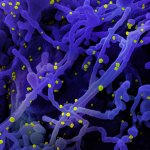
As President Trump claims that he is immune to COVID-19 and isolated reports emerge of reinfection, what is the truth about immunity to COVID-19? To date, there have been six published cases of COVID-19 reinfection, with various other unverified accounts from around the world. Although this is a comparably small fraction of the millions of people known to have been infected, should we be…

Innate immunity is the fastest-acting component of the immune system, but so far little is known about its role during infection with SARS-CoV-2. A few hours after an infection, the body emits an alarm signal, interferon, enabling cells that have not yet been infected to produce antiviral proteins. This phenomenon occurs well before the production of neutralizing antibodies. Scientists from the…
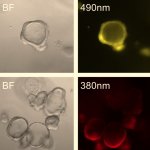
Researchers of the Technical University of Munich (TUM) have cultured so-called intestinal organoids from human intestinal tissue, which is a common byproduct when performing bowel surgery.
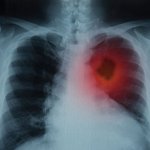
The role of Low Dose Computed tomography (LDCT) screening for lung cancer has been under debate for decades. The screening uses a low dose of an imaging procedure that uses special x-ray equipment to create detailed pictures, or scans, of areas inside the body. The results of two major clinical trials have provided evidence on lung cancer-related mortality reduction as a result of LDCT.

Carestream Health will offer insights on technology, innovative new products and research in medical imaging through a new webinar series titled Carestream Talks. The series will launch Oct. 28 with a segment on Bedside Imaging: An X-ray Room at Your Patient’s Bedside.

Researchers around the world can tap into a new inter-disciplinary online database of COVID-19 research, allowing them to search for new partners, resources and funding to boost the global battle against the virus.

Researchers at the University of Helsinki and the Dana-Farber Cancer Institute have identified the mechanism behind bone marrow failure developing in children that suffer from Fanconi anaemia. The findings will help to develop new therapies for the disorder.

Although uncommon, sudden permanent hearing loss seems to be linked to COVID-19 infection in some people, warn doctors, reporting the first UK case in the journal BMJ Case Reports. Awareness of this possible side effect is important, because a prompt course of steroid treatment can reverse this disabling condition, they emphasise. Sudden hearing loss is frequently seen by ear, nose and throat…
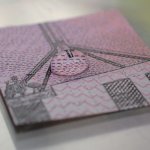
Researchers at CSIRO, Australia's national science agency, have found that SARS-CoV-2, the virus responsible for COVID-19, can survive for up to 28 days on common surfaces including banknotes, glass – such as that found on mobile phone screens - and stainless steel.
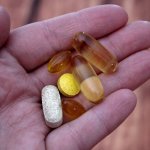
The professional perception of vitamin D as a medicine, rather than as a key nutrient, is constraining practice and jeopardising the health of elderly care home residents in England, conclude researchers in the journal BMJ Nutrition Prevention & Health. At a time when the vulnerability of elderly care home residents is under the spotlight because of the impact of COVID-19, an urgent review is…